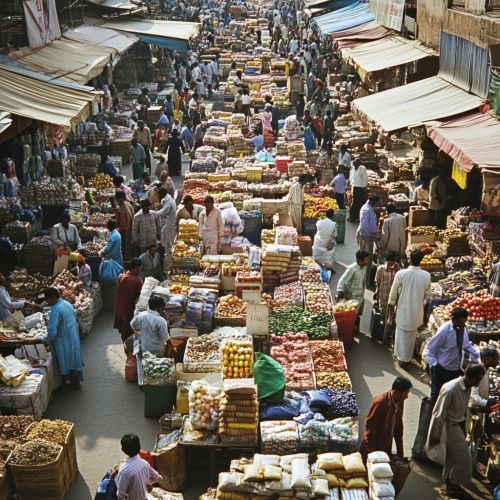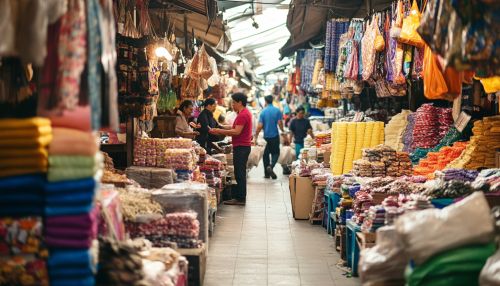Free trade
Introduction
Free trade refers to a policy or situation where governments do not restrict imports or exports. It is a cornerstone of economic policy that advocates for the elimination of barriers to international trade, such as tariffs, quotas, and subsidies. The concept is rooted in the belief that open markets and competition lead to more efficient allocation of resources, higher productivity, and increased consumer choice.
Historical Background
The origins of free trade can be traced back to the late 18th and early 19th centuries, during the Industrial Revolution. The ideas of Adam Smith and David Ricardo laid the groundwork for modern free trade theory. Smith's seminal work, "The Wealth of Nations," argued that countries could benefit from specializing in the production of goods in which they have an absolute advantage. Ricardo expanded on this by introducing the concept of comparative advantage, which suggests that even if a country does not have an absolute advantage, it can still benefit from trade by specializing in goods where it has a relative efficiency.
Theoretical Framework
Comparative Advantage
The principle of comparative advantage is central to the theory of free trade. It posits that countries should specialize in producing goods where they have the lowest opportunity cost. This specialization allows for more efficient global production and increases overall economic welfare. For example, if Country A is more efficient at producing wine and Country B is more efficient at producing cloth, both countries can benefit by trading these goods.
Heckscher-Ohlin Model
The Heckscher-Ohlin model extends the theory of comparative advantage by considering the relative abundance of factors of production like labor and capital. According to this model, countries will export goods that utilize their abundant resources and import goods that require resources in short supply. This model helps explain trade patterns based on resource endowments.
New Trade Theory
New Trade Theory emerged in the late 20th century to address limitations in classical trade theories. It incorporates elements like economies of scale and network effects, which can lead to monopolistic competition and trade even between similar countries. This theory helps explain the prevalence of intra-industry trade, where countries export and import similar types of goods.
Policy Instruments
Tariffs
Tariffs are taxes imposed on imported goods. They are one of the most common barriers to free trade. While tariffs can protect domestic industries from foreign competition, they often lead to higher prices for consumers and can provoke retaliatory measures from other countries.
Quotas
Quotas are limits on the quantity of goods that can be imported or exported during a given time period. Unlike tariffs, quotas directly restrict the volume of trade, which can lead to supply shortages and higher prices.
Subsidies
Subsidies are financial aids provided by governments to domestic industries. While they can make domestic products more competitive internationally, they can distort market prices and lead to inefficient resource allocation.
Economic Impact
Benefits
Free trade offers several economic benefits, including increased efficiency, lower prices, and greater consumer choice. By allowing countries to specialize in the production of goods where they have a comparative advantage, free trade leads to more efficient global resource allocation. Consumers benefit from a wider variety of goods at lower prices, while producers gain access to larger markets.
Criticisms
Despite its benefits, free trade is not without its critics. Opponents argue that it can lead to job losses in industries that cannot compete with foreign imports. There are also concerns about environmental degradation and the exploitation of labor in countries with lax regulations. Additionally, free trade can exacerbate income inequality, as the gains from trade are not always evenly distributed.
Political and Social Dimensions
Trade Agreements
Free trade is often facilitated through trade agreements between countries. These agreements can be bilateral, regional, or multilateral. Notable examples include the North American Free Trade Agreement (NAFTA), the European Union (EU), and the World Trade Organization (WTO). These agreements aim to reduce or eliminate trade barriers and create a more predictable trading environment.
Protectionism
Protectionism is the opposite of free trade. It involves the use of tariffs, quotas, and other measures to protect domestic industries from foreign competition. While protectionism can shield certain sectors, it often leads to inefficiencies and higher costs for consumers.
Globalization
Free trade is a key driver of globalization, the process by which economies, societies, and cultures become interconnected through trade, investment, and technology. While globalization has led to significant economic growth and poverty reduction, it has also sparked debates about cultural homogenization and the loss of national sovereignty.
Case Studies
The United States
The United States has a long history of both supporting and opposing free trade. In the early 20th century, the U.S. adopted protectionist policies like the Smoot-Hawley Tariff Act, which contributed to the Great Depression. In the post-World War II era, the U.S. became a champion of free trade, helping to establish the General Agreement on Tariffs and Trade (GATT) and later the WTO. However, recent years have seen a resurgence of protectionist sentiment, exemplified by the trade policies of the Trump administration.


China
China's economic rise has been closely linked to its embrace of free trade. Since joining the WTO in 2001, China has become the world's largest exporter and a major player in global trade. However, China's trade practices, including state subsidies and intellectual property concerns, have led to tensions with other countries, particularly the United States.
European Union
The European Union is one of the most successful examples of regional free trade. The EU's single market allows for the free movement of goods, services, capital, and labor among member states. This integration has led to significant economic benefits, but it has also faced challenges, such as the Brexit vote and varying economic conditions among member states.
Future of Free Trade
The future of free trade is uncertain, as it faces both opportunities and challenges. Technological advancements, such as blockchain and artificial intelligence, have the potential to revolutionize global trade by increasing transparency and efficiency. However, rising protectionism and geopolitical tensions pose significant risks. The COVID-19 pandemic has also highlighted vulnerabilities in global supply chains, prompting calls for more resilient and localized production.
See Also
- Comparative Advantage
- Heckscher-Ohlin Model
- New Trade Theory
- Globalization
- Trade Agreements
- Protectionism
References
- Adam Smith, "The Wealth of Nations"
- David Ricardo, "Principles of Political Economy and Taxation"
- Paul Krugman, "Rethinking International Trade"
